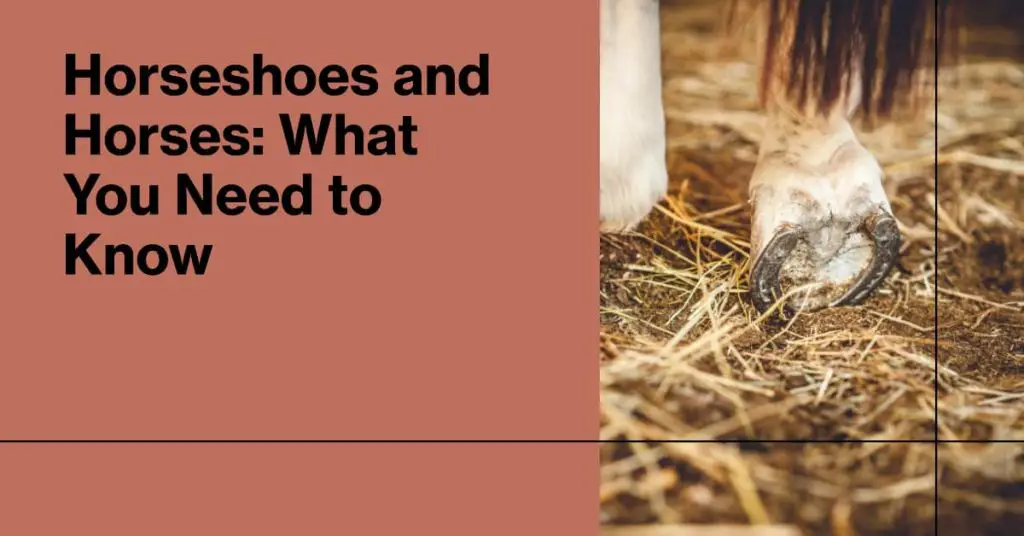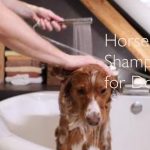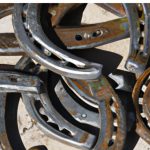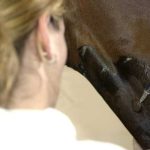Does putting horseshoes on a horse hurt them? No, putting horseshoes on a horse does not hurt them. Horseshoes are designed to protect the bottom of the hoof from wear and tear, which can cause pain for horses that do not have them.
Properly fitted horseshoes also spread pressure across the entire foot rather than just one spot, making it more comfortable for horses to walk or run.
Horses with shoes may experience some soreness after shoeing due to having their feet held in place while being nailed in, but this should fade quickly once they become accustomed to wearing their new shoes.
Why Do Horses Need Shoes But Not Cows
Horses and cows are both hoofed animals, but they have different needs when it comes to protection. Horses need shoes because their feet can be damaged easily due to work, such as going on long rides or running around in a pasture.
Cows don’t typically put the same stress on their feet as horses do, so they don’t require footwear for protection like horses do.
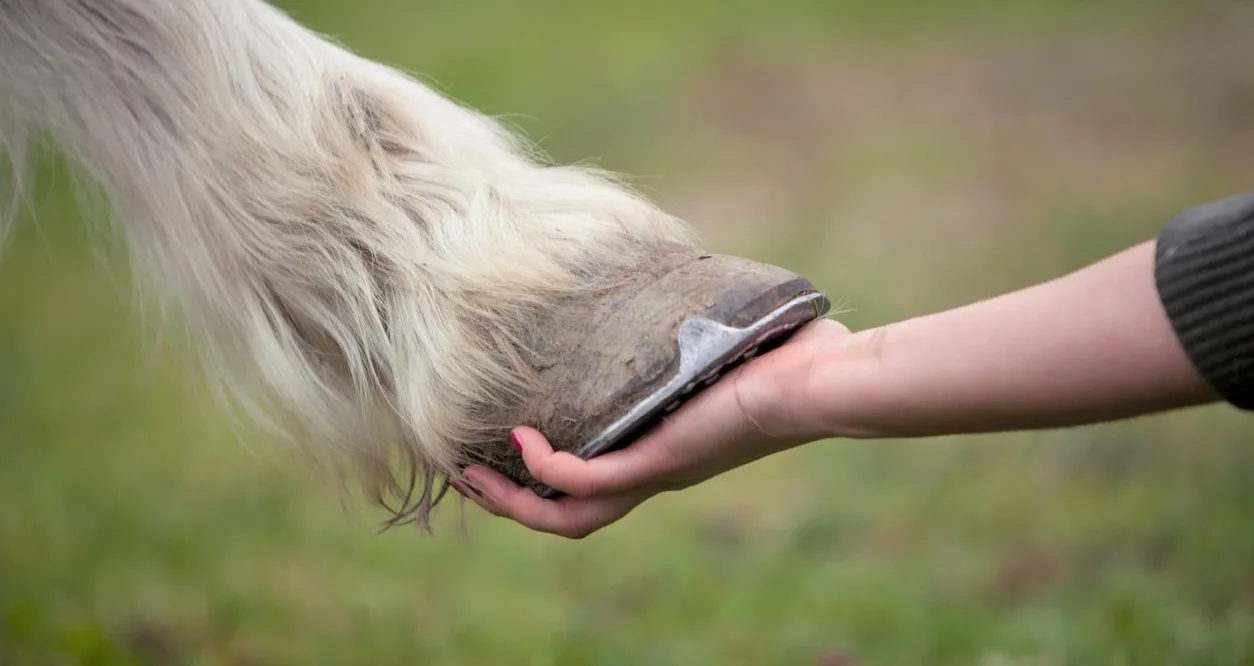
When and Why Horses Might Require Shoes
Factors Influencing the Need for Roadwork Shoes
Horses required to exercise regularly on pavement or hard-packed surfaces may need shoes to protect their hooves from excessive wear. Repeated impact on hard surfaces can cause thin soles and excessive wear to the outer hoof wall over time.
For horses in active work needing to cover longer distances for training, roadwork shoes provide reinforcement to reduce strain on the hoof from extended periods on unyielding surfaces.
Properly fitted shoes can preserve hoof integrity and support the hoof capsule when horses must train on surfaces unsuitable for barefoot work.
Addressing Stony Bridlepaths: The Hacking Dilemma
For leisurely rides on bridlepaths, a horse’s hooves can be challenged by uneven, rocky terrain. Loose or embedded stones can catch under the hoof and cause bruising or injury if unshod.
Some horse owners who hack on mixed or stony surfaces may opt for shoes to protect the sole and provide traction. Whether traditional or specialized designs, shoes can give the hoof a sturdier edge to navigate rougher trails while cushioning the sole from impact.
This allows horses to continue recreational riding pleasure on mixed-surface routes that could prove damaging without protective shoes.
Exploring Conformation’s Role in Horseshoeing
A horse’s anatomical structure and biomechanics influence its hoof health needs. Horses with steeper pasterns or upright feet, for example, place different stresses on the coffin bone and hoof wall.
Proper trimming and shoeing can help compensate for inherent conformational predispositions to endure soundness issues. Farriers closely examine each horse’s conformation to determine whether shoes may assist naturally weak or contracted feet.
Judicious shoeing tailored to an individual’s conformation can prevent imbalance or excessive wear patterns to maintain comfortable, resilient hooves.
Managing Naturally Brittle Hooves with the Right Shoes
Some horses’ hooves are inherently more delicate due to genetics or nutrition. Horses with fine, shelly hoof walls can be prone to cracks or chips, especially in wet conditions.
Careful trimming and specially designed shoes provide structural support for naturally friable hooves. Therapeutic or wedge pads redistribute pressure to reduce strain in vulnerable areas.
Some farriers fit heart bar or egg bar shoes that wrap tightly around the hoof to safeguard brittle walls. With the right corrective shoeing plan, naturally delicate hooves may stay sound through regular work.
Shoeing for Recovery: Post-Illness or Injury Considerations
Significant medical issues or traumatic injuries can temporarily weaken a horse’s hooves, leaving them prone to fissures or lameness. Farriers work with vets and therapists in rehabilitative shoeing to restore hoof integrity slowly.
Temporary heart bars, pads, or wedge styles redistribute weight-bearing during healing. Corrective trimming improves tracking. Therapeutic nailing techniques stimulate circulation.
Gradual resumption of work commences barefoot or shod, depending on hoof resilience. With careful shoeing management and rest, hooves can fully recover toughness to resume previous performance levels.
The Lifespan of Horseshoes: How Often Should They Be Replaced?
Horseshoes are an integral part of keeping horses healthy and sound. The lifespan of a horseshoe can vary dramatically depending on the horse, its hooves, workload and environmental conditions.
Generally, horseshoes should be replaced every 4-8 weeks. Shoes left on too long can lead to abnormal hoof growth, limit circulation in the hoof, cause nail holes to widen and create discomfort.
Horseshoe replacement allows the farrier to rebalance and shape the hoof, check for issues and maintain proper hoof mechanics and gait.
Many factors influence how often horseshoes need replacement. Fast-growing hooves or brittle hooves may need shoes changed more frequently. Horses working on an abrasive footing or doing jumping, racing and other high-impact sports may wear shoes faster.
Seasonal changes from wet conditions to dry conditions can also accelerate wear. Farriers train for years to learn proper trimming and balancing and expertly evaluate each hoof to determine optimal shoeing intervals. Working as a team with farriers, veterinarians and horse owners helps ensure equine athletes stay sound through proper horseshoe replacement.
Exploring the World of Horseshoes: Types and Varieties
The most common horseshoes are traditional metal shoes, usually made from steel or aluminium. Metal shoes offer durability, customizability, traction, and protection. However, metal conducts cold so some horses may find metal shoes uncomfortable in winter.
The installation also requires nails, sparking a debate around long-term hoof health impacts. Still, metal shoes remain a top choice for many disciplines.
Seeking alternatives, some turn to rubber horseshoes. Supporters note shock absorption, flexibility, lightness, and warmth as upsides. The texture provides decent traction minus the metal’s outright slip prevention.
Critics argue that longevity, retention without nails, sizing adjustments, and performance questions leave rubber trailing metal competition. More data is needed to gauge viability fully.
Regardless of the base material, customized shoes help overcome individual horse challenges. Special pads and clips provide cushioning and support for sensitive feet.
Remedial shoes can correct conformational issues or function during injury recovery. And purpose-made shoes give hunters, jumpers, dressage mounts, and other athletes a tailored edge.
By adjusting shape, weight, and components, carriers craft custom shoes for each horse’s needs.
Is It Cruel to Put Horseshoes on Horses?
As a long-time horse enthusiast, I’ve always been interested in the debate about whether or not it’s cruel to put horseshoes on horses. While some argue that metal shoes compromise the natural shape of a horse’s hooves and can cause pain and discomfort, others believe that horseshoes provide necessary protection for their hooves and are essential for their health and well-being.
The answer is more complicated than simply “yes” or “no” — it depends largely on the individual situation.
In many cases, putting full metal shoes on horses has benefits such as protecting them from injuries caused by sharp rocks or other objects they might step on while galloping across terrain.
Additionally, metal horseshoes help protect against abrasions that may occur during activities like dressage or jumping competitions where there is frequent contact between the ground and the hoof. However, when left unchecked for too long without proper trimming of their natural growth patterns over time (which varies with each animal).
These same shoes can lead to serious issues, including lameness due to an imbalance in weight distribution throughout the leg.
Therefore, regular maintenance should be considered before using shoeing as part of your equine care routine. Ultimately, though, most experts agree that given certain conditions – such as properly fitted shoes with regular attention paid to trimming – putting horseshoes on horses isn’t inherently cruel if done correctly; it can even be beneficial in certain situations depending upon lifestyle use!
Do Horses Feel Better After Horseshoes?
Horses have been wearing horseshoes for centuries, and while there is some debate as to whether they are beneficial, it’s generally agreed that they can provide some protection and comfort.
Horseshoes help protect the hoof from cracking and chipping due to wear and tear, which can cause pain. Additionally, horseshoes can improve traction on slippery surfaces, making it easier for horses to move around safely.
Since horse feet do not naturally produce shock-absorbing material like human feet, having horseshoes in place helps reduce the stress placed on their joints when galloping or trotting over long distances.
While horses may find them uncomfortable at first (since a lot of pressure needs to be applied during the fitting process), many owners report that their horses seem more comfortable after getting fitted with new shoes – especially when riding over rough terrain or hard ground.
Ultimately, suppose your horse is regularly ridden or worked on rough terrain. In that case, you should consider investing in a good pair of horseshoes, as this could make all the difference in ensuring your horse’s well-being and performance!
Why Do Wild Horses Not Need Shoes?
Wild horses have lived in the wild for thousands of years and are naturally equipped to survive without shoes. Wild horses tend to live on hard surfaces such as rocks and gravel, making them more resistant to injuries than domestic horses kept on softer ground.
Their hooves are also well adapted to their environment; they grow quickly and wear down just as fast so that new growth is constantly present.
Furthermore, since wild horses typically run long distances over rough terrain, their feet become quite tough over time – capable of withstanding much harsher conditions than a shod horse’s foot could ever endure.
This natural adaptation helps protect the horse from injury. It allows them to move freely across harsh terrain without carrying extra weight or risking slipping or stumbling due to ill-fitting equipment like horseshoes.
In short, wild horses do not need shoes because they have evolved specifically for life in the wilderness – adapting physically and mentally to their unique environment through generations of selective breeding and survival tactics – making them perfectly suited for living without assistance from manmade devices like horseshoes!
What Do Wild Horses Do About Horseshoes?
Wild horses do not need horseshoes, as they have evolved to be able to travel long distances without them. Wild horses’ hooves are incredibly tough and resilient due to a combination of their evolutionary adaptations.
Such as the shape of their hoof walls, which deflect rocks and other debris, the hard horn-like material on their sole that helps protect them from sharp objects and provides traction when needed, and the thick layer of cushioning around the frog in the centre of each foot.
The pads also act like shock absorbers for wild horse feet, helping them absorb large amounts of energy while running or galloping across rough terrain.
Horseshoes can cause damage if used incorrectly or too tightly fitted, so it is best not to use them with wild horses unless specifically deemed necessary by a veterinarian after an assessment.
Do horseshoes hurt the horse?
Conclusion
In conclusion, putting horseshoes on a horse may not necessarily hurt them. However, to ensure the health and well-being of the animal, proper care should always be taken when applying horseshoes.
It is important to research different types of shoes available and consult with an experienced farrier before deciding what shoe might be best for your horse.
Additionally, regular checkups with a veterinarian are necessary to monitor the condition of your horse’s hooves and their reaction to the shoes being worn.
Janet G Kulick is an experienced horse rider, trainer, and owner of the informative horse blog, Horseray.com. Her engaging writing style and wealth of knowledge on horse care, riding, and training make her a trusted source for horse enthusiasts worldwide.

